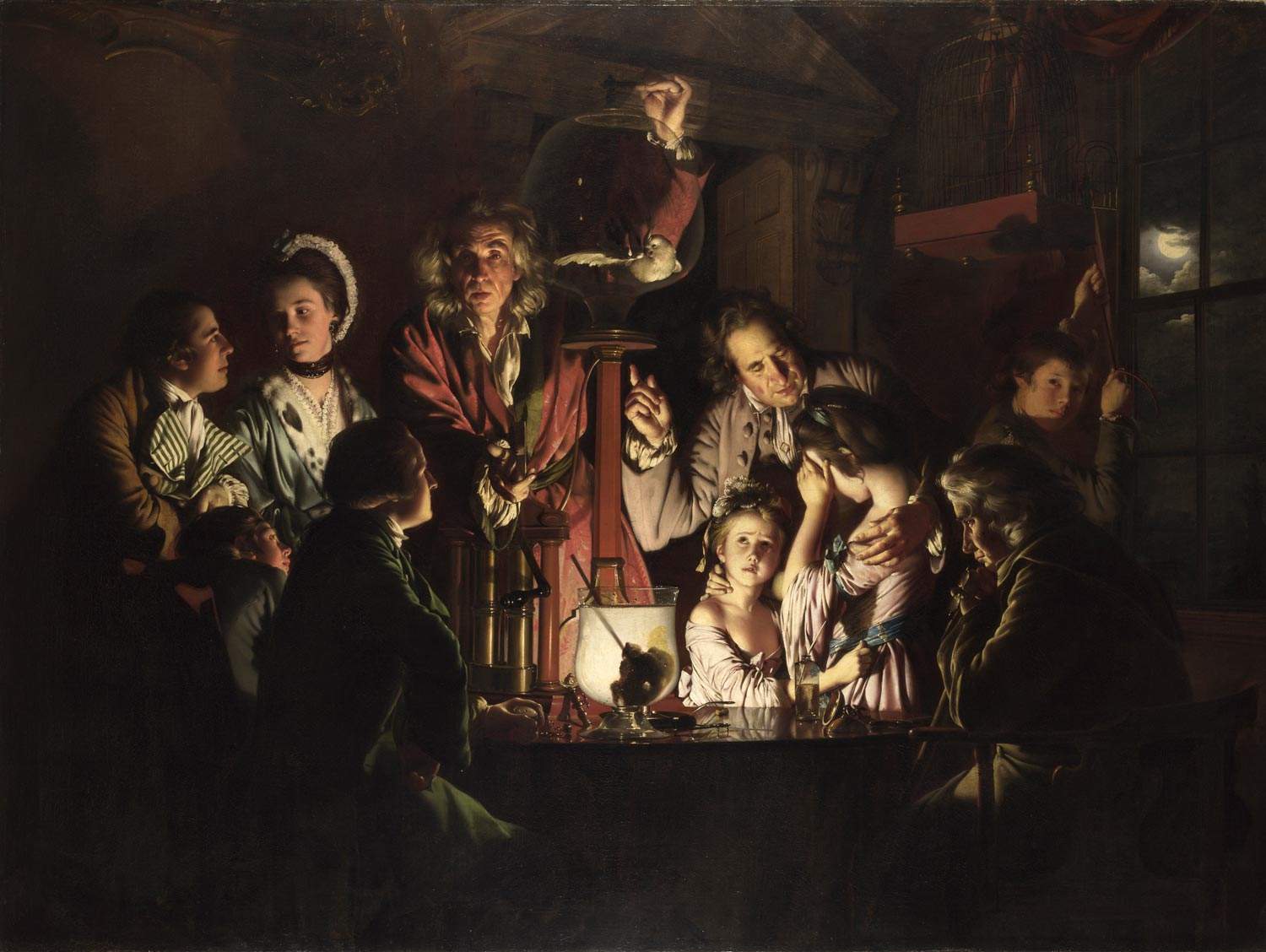Reactions in the face of science: Wright of Derby's Experiment on display at the Uffizi
Until January 24, the Uffizi Gallery is exhibiting a masterpiece by Joseph Wright of Derby (Derby, 1734 - 1797) arriving from the National Gallery in London: the work, for the first time in Italy, is the celebrated Experiment, and will be on display from today, October 7, 2020, on the second floor of the museum (in room 38, between the room that holds the paintings of Leonardo da Vinci and that of Michelangelo and Raphael), as part of the exhibition Art and Science, curated by Alessandra Griffo. Carried theme of the painting is human reactions to scientific research.
In 1768, the date to which Wright of Derby’s painting dates, experiments on air vacuum by means of an air pump developed by Robert Boyle, an Irish chemist who had lived in the previous century, were no longer a scientific novelty but were being proposed in the most varied venues with widely proposed educational and didactic purposes. This was also the case in Florence, where, starting in the 1770s, Grand Duke Peter Leopold of Lorraine commissioned similar experiments and demonstration laboratories that introduced knowledge of the main chemical-physical laws then known: these experiments were organized first in the Pitti Palace for the Grand Duke’s children, then also for a wider public in the newly established Museum of Physics and Natural History set up at the Specola. The instruments used by the institute, similar to the one reproduced in the London painting, later found their way to the Museo Galileo in Florence, where they are still kept today.
TheExperiment by Wright of Derby, one of the greatest English (and other) painters of the eighteenth century, depicts a gathering in an English country house: the audience is very diverse, and it is precisely this sampling of different human types that allows the artist to depict expressions with theatricality: also reinforcing this effect are the strong contrasts of light and shadow, and the illusionist attire of the man in the center: it is he who, by turning the key and removing the air from the bell, can decree the death of the bird. The very choice of the white budgerigar (instead of the usual canary) makes the contrast between the whiteness of the feathers and the darkness around even more dramatic. Among the marveling spectators, in the case of TheExperiment, must also be included the viewer of the painting; the dimensions of the characters, the instrumentation and the spaces themselves, close to 1:1 scale, in fact create the fiction of a room within a room, with a realistic effect enhanced by the sharp, meticulous, highly detailed pictorial quality.
Placed in dialogue with the large canvas in the exhibition are other works that illustrate the practice of candlelight study, the nocturnal concentration on conceptual work, such as Bartolomeo Cavarozzi’s Saint Jerome with Two Angels (1617), and Enea Vico’s drawing, The Academy of Baccio Bandinelli (1560). Completing the exhibition is the nineteenth-century Mantel Clock in the form of a cage, a precious object on loan from the Imperial and Royal Apartments of the Pitti Palace, whose shape directly evokes the aviary from which the dove, the protagonist, despite itself, of the experiment recounted by Wright of Derby in his painting, was extracted.
“Italy and England,” says the U.K.’s Minister for Media and Culture, John Wittingdale, “share an illustrious history of inspiring global progress in the fields of art and science; a tradition, this one, that has been maintained through the centuries and continues firmly today. This exhibition at the Uffizi celebrates our dedication to building strong and lasting ties between our two nations through cultural exchange.”
“Wright of Derby’s painting,” adds Uffizi Director Eike D. Schmidt, “lends a monumental quality to human reactions in front of a scientific experiment: it narrates emotions and describes characters as in a history painting, the noblest genre in painting up to that time. The scene plunges us with extraordinary immediacy into the Enlightenment spirit that was also experiencing a glorious season in Florence: it was at this time, in 1769, that Grand Duke Peter Leopold decided to open the Uffizi to the public, to educate them; however, in those years the most visited museum in the city was the Specola Museum of Natural Sciences. In the eighteenth century, Science also dominated on the banks of the Arno.”
“Besides constituting a cornerstone of eighteenth-century English painting,” explains curator Alessandra Griffo, “the Experiment on a Bird Inserted in an Air Pump, executed in 1768 by Joseph Wright of Derby, also comes to the public’s attention today, in this era marked by Covid-19, with unexpected accents of topicality. Our reactions to scientific research - indifference, awareness, reflection, curiosity or fear: are indeed one of the themes of this work, which nevertheless proposes, as happens with great works, numerous levels of reading. Some have been suggested in the exhibition by associating five other works from the Uffizi Galleries with the London painting. On the one hand, the exquisitely artistic theme of night-light paintings is sketched, and on the other, reflection on the sensitive subject of respect for the dignity of animals is solicited.”
 |
| Reactions in the face of science: Wright of Derby's Experiment on display at the Uffizi |
Warning: the translation into English of the original Italian article was created using automatic tools. We undertake to review all articles, but we do not guarantee the total absence of inaccuracies in the translation due to the program. You can find the original by clicking on the ITA button. If you find any mistake,please contact us.





























